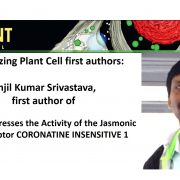
Recognizing Plant Cell first authors: Anjil Kumar Srivastava
Anjil Kumar Srivastava, first author of SUMO Suppresses the Activity of the Jasmonic Acid Receptor CORONATINE INSENSITIVE 1
Current Position: Postdoctoral Research Associate in Department of Biosciences, Durham University, Durham, United Kingdom
Education: Ph.D. in Botany from Purvanchal University,…
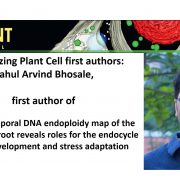
Recognizing Plant Cell first authors: Rahul Bhosale
Rahul Arvind Bhosale, first author of A spatiotemporal DNA endoploidy map of the Arabidopsis root reveals roles for the endocycle in root development and stress adaptation
Current Position: Research Fellow at Department of Plant Sciences, University of Nottingham, UK.
Education: PhD in Biochemistry…

Gating of miRNA movement at defined cell-cell interfaces governs their impact as positional signals
Small RNAs constitute a unique signal transduction mechanism by targeting specific mRNAs and causing a direct down-regulation of target gene expression. Mobile RNAs are known to act as positional cues in developing tissues or to signal stress responses at the systemic level. Although plasmodesmata…
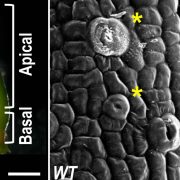
The floral C-lineage genes trigger nectary development in petunia and Arabidopsis
Nectar production is a crucial feature of plants to attract insects and enhance their expansion across the ecosystems. The molecular basis of nectary development has been studied in detail only in the model plant Arabidopsis thaliana, where the nectaries are positioned on the flower receptacle and near…
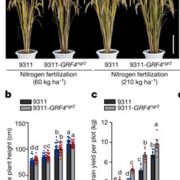
Modulating plant growth–metabolism coordination for sustainable agriculture
Green revolution varieties of rice and wheat are dwarfed, making them resistant to lodging, and DELLA proteins contribute to this dwarfing. At the same time, green-revolution varieties are not very good at taking up nitrogen, so much of the applied fertilizer is wasted (and polluting). Li et al. have…
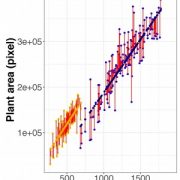
Genetic components of water use efficiency in the model grass Setaria
Increasing water use efficiency is important for improving crop yields in diverse environments. This has been difficult due to the complex morphological and biochemical processes involved in water use and plant growth. Feldman and colleagues use a high-throughput phenotyping platform to monitor an interspecific…
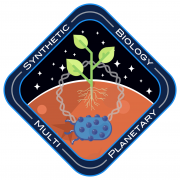
Perspective: The multiplanetary future of plant synthetic biology
The exploration of space is one of the most inspiring areas of scientific research and a major driver of technological innovation. One of the major factors limiting human expansion trough space is the immensely high cost of resupplying resources from Earth. Mars is the closest neighbor to Earth and although…
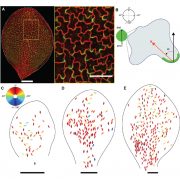
Ectopic BASL reveals tissue cell polarity throughout leaf development in Arabidopsis thaliana
Signals determining tissue polarity are fundamental to proper organ development. Asymmetry across the entire organ arises due to to polarity fields. Although there are numerous examples of proteins that express preferential polar localization in the cell, the mechanism that coordinates the polarity…
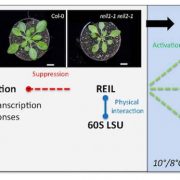
Plant acclimation and growth under low temperature conditions mediated by REIL proteins
REIL1 and REIL2 proteins in Arabidopsis are homologs of REI1, a yeast ribosome biogenesis factor. REI1 facilitates 60S ribosomal maturation in yeast. Beine-Golovchuk and co-workers have studied the cold acclimation response of the double mutant reil1-1 reil2-1. Previous studies by the same group showed…

